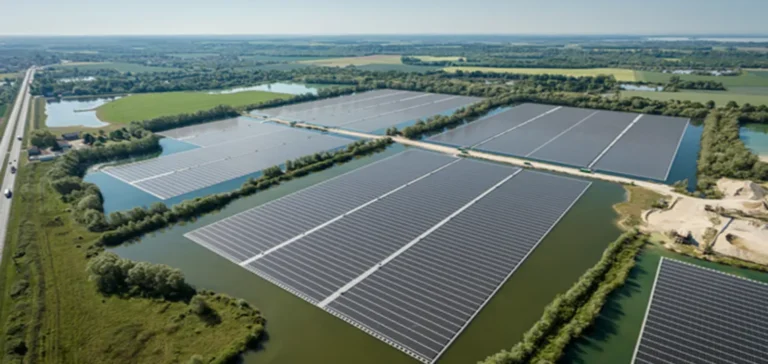In 2024, the member countries of the BRICS group (Brazil, Russia, India, China, and South Africa) produced 51% of global solar electricity, sharply up from 15% a decade ago, reveals a new study by energy-specialised organisation Ember. This result is primarily driven by China, India, and Brazil, which have experienced a significant increase in their solar electricity generation capacity in recent years.
China leads, followed by India and Brazil
According to the analysis published by Ember, China maintains its position as the world’s top solar producer with 834 TWh in 2024, nearly three times the output of the second-ranked United States. Over the same period, India quadrupled its production from 2019 levels to reach 133 TWh, while Brazil overtook Germany, reaching 75 TWh and joining the global top five solar producers.
Additionally, this increase also relates to the share of new electricity demand met by non-fossil sources within BRICS countries. Solar power alone accounted for 36% of the total growth in electricity demand within the group in 2024, compared to 14% the previous decade and just 0.25% twenty years ago. Including other clean energy sources such as wind, hydropower, and nuclear, this proportion rises to 70% for 2024.
Contrasting developments within BRICS nations
Progress remains highly uneven among the group’s member states. In Russia, solar production remains marginal, below 0.5 TWh in early 2025. Similarly, Indonesia has satisfied more than 75% of its rising electricity demand from fossil fuel sources between 2014 and 2023, and Egypt remains highly reliant on natural gas to meet its growing electricity consumption.
However, economic conditions are changing rapidly and may allow lagging countries to accelerate their transition. A previous report by Ember highlights that 24-hour solar electricity combined with battery storage is now economically competitive in South Africa, largely due to falling battery costs.
Declining costs boost solar production
The Ember study also notes that between January and May 2025, China covered all additional electricity demand with clean energies, notably solar, leading to a parallel decrease in fossil-based production. During this same period, India and Brazil recorded respective increases of 32% and 35% in solar generation compared to the previous year.
These developments come in a context where solar technologies are becoming economically more affordable, creating significant commercial opportunities for the entire BRICS group. The findings from this report will likely feature prominently in discussions at the next BRICS summit, where energy and energy independence are expected to be high on the agenda of participating countries.






















